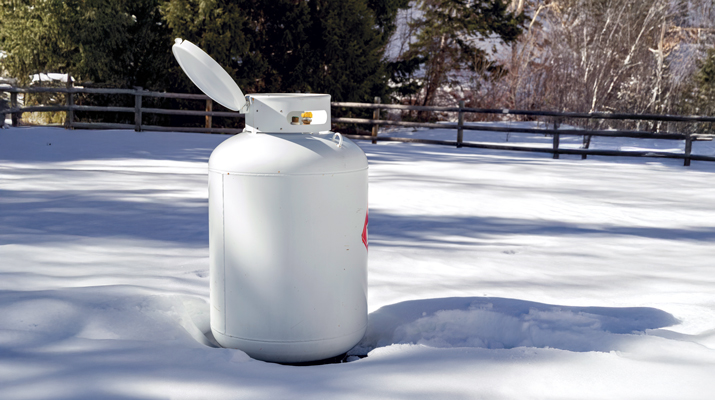Examining dismissal strategies in lawsuit against tank manufacturer
This case involves the installation of a propane tank at a new home under construction in Colorado.

The tank manufacturer provided warnings under the dome of the tank. These warnings included odor fade and recommended the installation of gas detectors. It specifically warned against relying solely on the sense of smell while purging gas lines.
After the tank had been set at the new home, the local propane marketer leasing the tank filled it with properly odorized propane. Forty-six days later, while a plumber was purging lines to install new gas appliances at the home, an explosion occurred that injured the plumber and damaged the home.
It was not disputed that the odor in the tank had faded. As readers are aware, propane in its natural state is colorless and odorless, so ethyl mercaptan is added to propane for residential, commercial and most industrial applications to warn of a leak in the event propane escapes into the atmosphere. But when propane meets rust inside a tank, it oxidizes the ethyl mercaptan, converting it to a disulfide, which gives off a much less odiferous smell than that of ethyl mercaptan.
The tank manufacturer filed dispositive motions to dismiss all seven claims brought against it by the injured plumber. At this stage, the party seeking dismissal must win on the law, and there can be no facts that might support a different outcome than the one being offered by the party seeking dismissal.
We will focus on some of the key motions for relief brought by the tank manufacturer.
Code compliance
The tank manufacturer sought to dismiss the plaintiff’s claims against it for strict product liability for manufacture of a defective propane tank and negligent propane tank manufacture.
The tank manufacturer submitted evidence that its tank was manufactured in compliance with all applicable codes, and no evidence to rebut this presumption had been offered by the plaintiff. The tank manufacturer cited a Colorado statute that codified the presumption that its product was not defective if it complied with “any code, standard or regulation adopted or promulgated by the United States or by this state, or by any agency of the United States or of this state.”
The plaintiff conceded that the tank manufacturer had complied with all codes, standards or regulations. But the plaintiff argued that the presumption the tank manufacturer argued simply created a question for the jury.
Through expert testimony, the plaintiff argued that rust inside the tank rendered it defective, as that allowed odor fade to occur and explained why the plumber did not smell gas when he was purging gas lines.
However, the court did not find this argument persuasive. The plaintiff’s expert explained how rust may form inside a tank, but in this case, there is no actual evidence that there actually was rust inside the tank, and no one ever opened the tank to check. So, without any actual evidence of tank rust, the court granted dismissal of these two claims brought by the plaintiff.
Warnings
The tank manufacturer also sought dismissal of the plaintiff’s claim of strict liability due to inadequate warnings and negligence based on duty to warn because it provided warnings on the specific issue that led to this explosion.
“[The tank manufacturer] included specific warnings on its propane tank identifying the phenomenon of odorant fade in propane tanks, particularly in new tanks, and advising all who read the warning of this phenomenon and the steps to take in order to mitigate the risk of odor fade,” the company argued.
However, it was undisputed that the plaintiff never saw the warnings under the dome of the tank. To read the warnings, the plaintiff would have needed to climb a ladder, but he never did. He did not read any other warnings about odor fade. Based on the placement and effectiveness of the warnings, the court denied the motion for summary judgment. The court reasoned that it could not conclude that the warnings were “conspicuous enough to be effective” and left it to the jury to decide if the tank manufacturer did “everything it reasonably could have done to inform users of the tank of potential hazards.”
Moral of the story: Perform all of the testing needed to support a position you wish to take in court. How warnings are posted and distributed will be examined in the event of an explosion. Consider this when distributing warnings.
John V. McCoy is with McCoy, Leavitt, Laskey LLC. His firm represents industry members nationally. He can be reached at jmccoy@MLLlaw.com or at 262-522-7007.
















